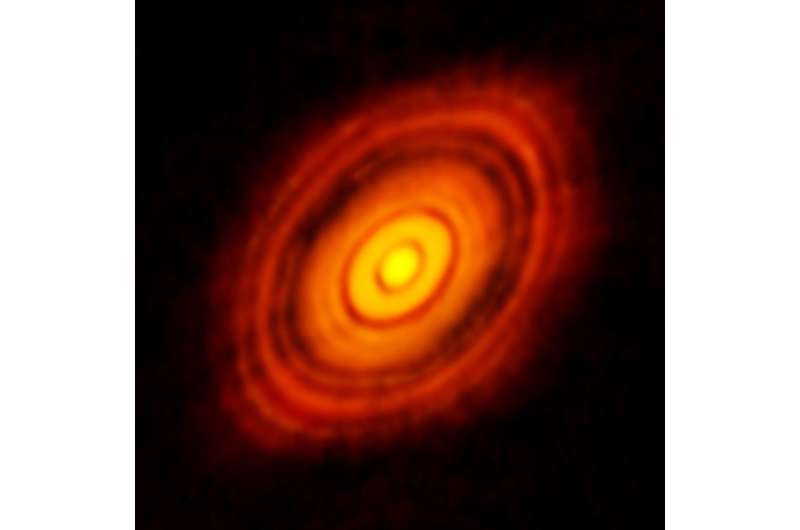Our moon—or la Luna—has inspired humankind for millennia.
It’s largely agreed that the moon was created around 4.5 billion years ago when a protoplanet collided with early molten Earth, smashing off a chunk large enough to form the moon.
This Mars-sized protoplanet is often called Theia.
The unique collision with Theia set in motion a butterfly effect, impacting almost every facet of Earth’s history and modern life.
Without the moon, we’d have no tides, and it’s possible our aquatic ancestors would never have made it to dry land.
Our solid, rocky moon is rare.
Of the three planets closest to the sun, we’re the only one with a moon.
It’s also massive, with a diameter about a quarter of Earth’s—another rarity in our solar system.
Most moons start as disks, like Saturn’s rings. These gradually merge into larger and larger globs, eventually forming one big orb. Either that, or moons start as asteroids and are captured by gravity as they zoom by.
They did the math
Once considered controversial, mathematical modeling supports the giant-impact theory.
Dr. Jacob Kegerreis is an astrophysicist at Imperial College London. He uses supercomputer simulations to study giant impacts.
These simulations model the early solar system. Through repetition and trial and error, they explore what could have occurred eons ago.
Jacob describes our ancient solar system as a “huge cloud of gas and ice and dust” around the sun that was slowly collapsing and clumping together under its own gravity.
Early on, planets like Jupiter grew giant, and the increased gravity pulled in matter around it.
Terrestrial planets like Earth and Venus formed differently.
“Those are made up of tens of smaller protoplanets,” says Jacob. “Small, rocky bodies that were forming themselves and then collided together.”

From little things, big things grow
Previously, it was suggested the moon was an asteroid captured by Earth’s orbit or was a part of Earth that split off due to the force of our rotation.
Jacob says these theories are unlikely.
“It is very hard to come up with a good way to get that much mass, that much material, that much energy and angular momentum out into orbit to make something like the moon without a giant impact,” says Jacob.
“The fact that Earth and the moon are so similar makes it appealing to say that’s because they came from the same stuff.
“The fact that they are so similar is also a real challenge … because with many simulations that we run of giant impacts, you don’t get an equal mix of the impactor and the proto-Earth that collide.
“We don’t yet have a complete explanation of why the signatures are so identical now.”
Lunar lengths
The moon drifts a tiny bit further from Earth each year. This can support the giant-impact hypothesis, as researchers can chart the historical course of the moon and cross-reference that with modeling data.
“How the moon’s orbit has evolved and how long it would have taken for the moon to move away from Earth helps to constrain how fast Earth would have been spinning after the impact,” says Jacob.
“One of the reasons scientists can learn so much from studying the moon is how comparatively pristine the moon is as a celestial body that formed in the early solar system.”
Unlike Earth, which is a constantly churning mass of weather and plate tectonics.
A huge puzzle
Jacob’s simulations use a technique called smooth particle hydrodynamics.
“All you are doing is describing the system and modeling the system with millions or even billions of particles that are representing this material,” says Jacob.
Second by second, the computer calculates how each little particle moves and interacts with gravity and pressure.
“We design codes to use these impressive supercomputing machines to try to do this as efficiently and rapidly as possible,” says Jacob.
“It’s solving these pretty standard equations that we can individually test to then predict what happens in an extremely complicated entire system.”
Without a time machine, it’s extremely difficult to determine precisely what happened 3.5 billion years ago.
That said, dated lunar rock samples collected on the Apollo missions also support the theory that Earth and the moon were once one.
Confirming the giant impact with Theia is a massive undertaking. Jacob believes it requires the continued improvement of modeling technology while learning as much as possible about the Earth-moon system.
“It’s a huge puzzle with many different pieces,” he says.
“It’s about answering lots of other interconnected questions as well as the specific origin of the moon.”
This article first appeared on Particle, a science news website based at Scitech, Perth, Australia. Read the original article.
Citation:
What made the moon? (2025, October 30)
retrieved 30 October 2025
from https://phys.org/news/2025-10-moon.html
This document is subject to copyright. Apart from any fair dealing for the purpose of private study or research, no
part may be reproduced without the written permission. The content is provided for information purposes only.

